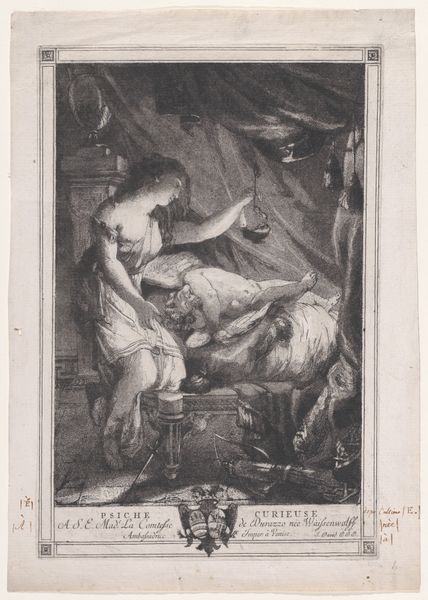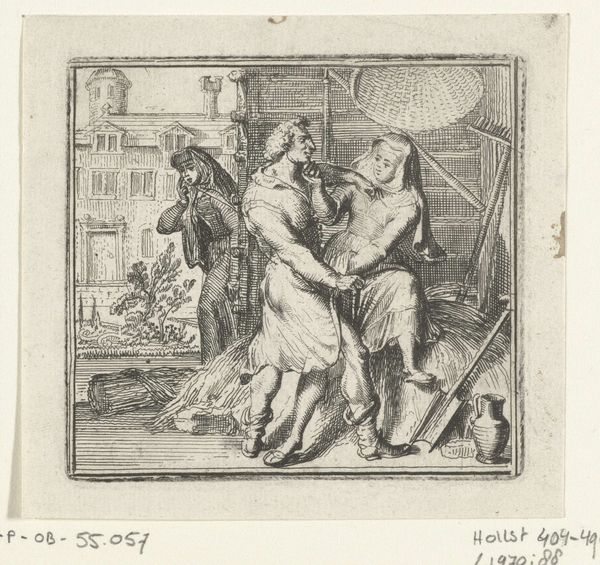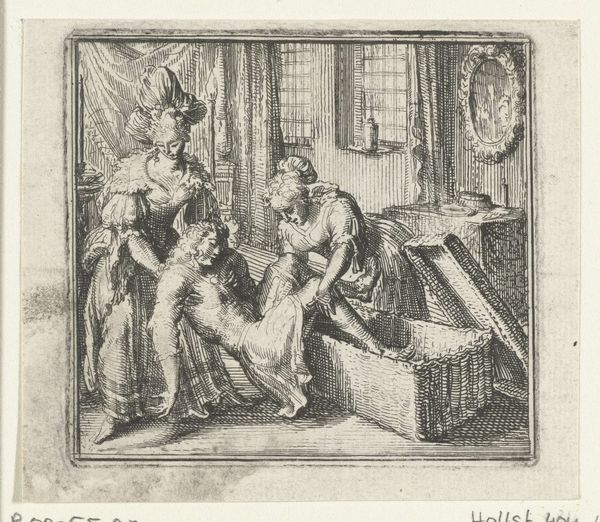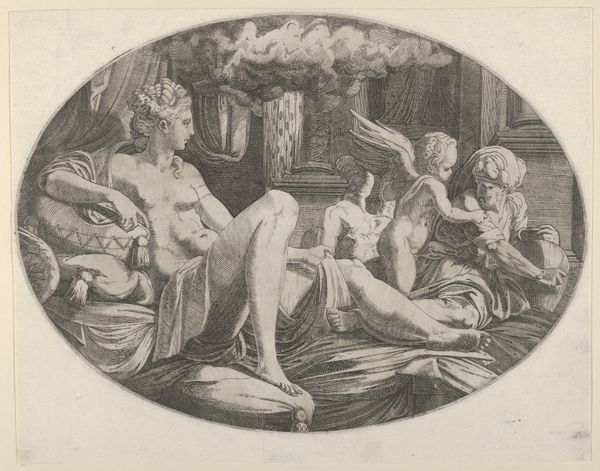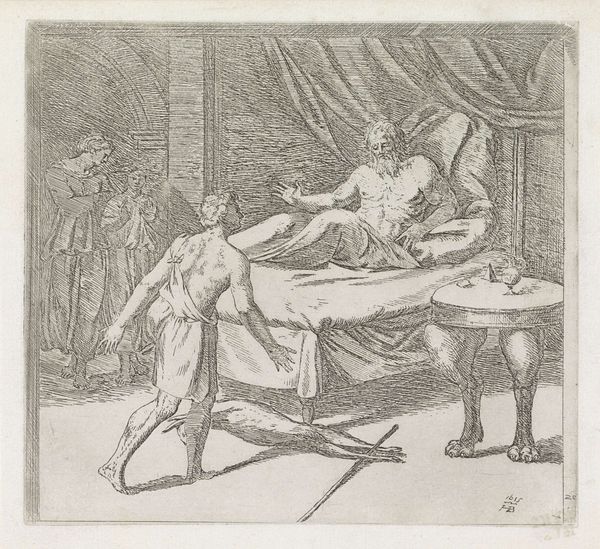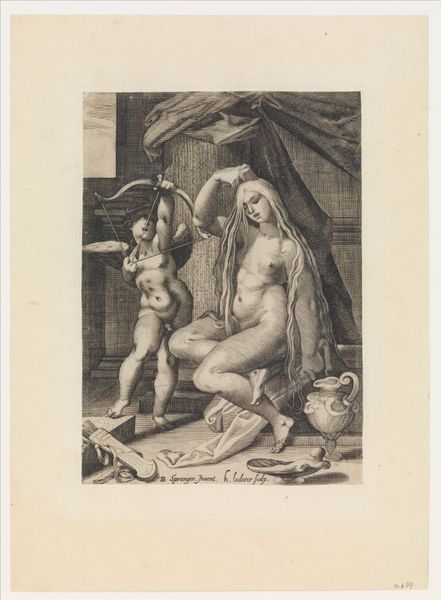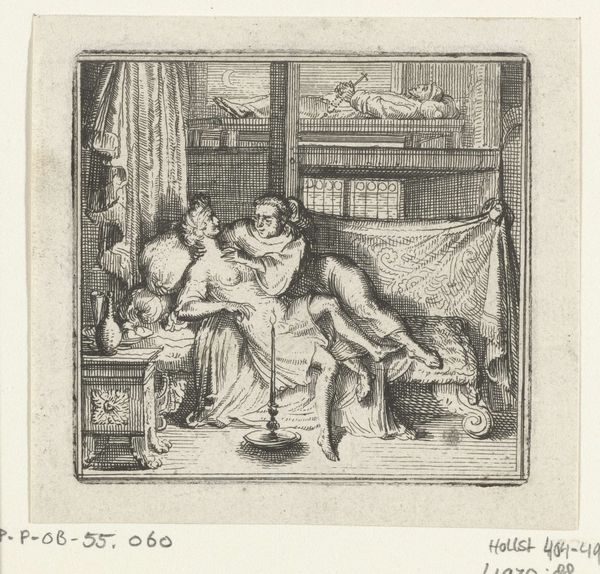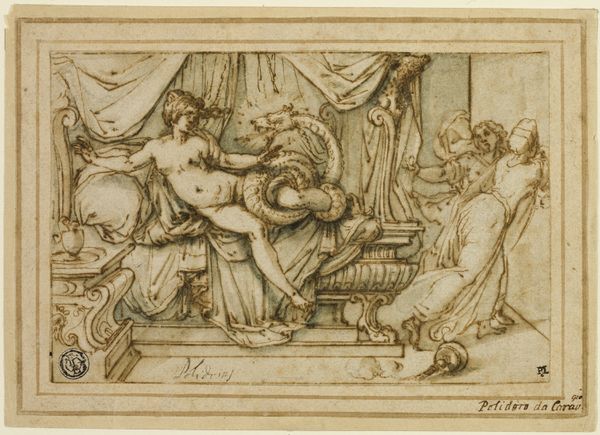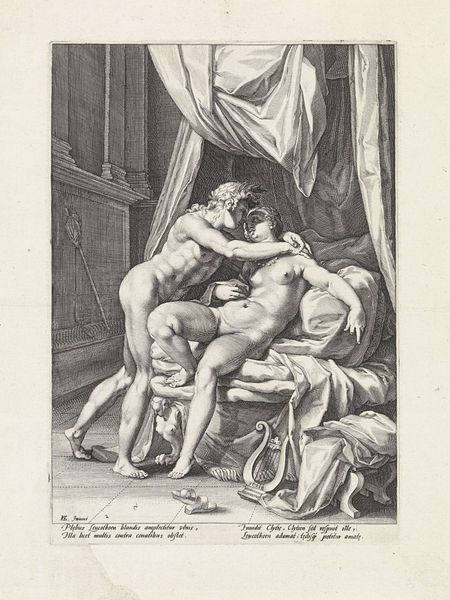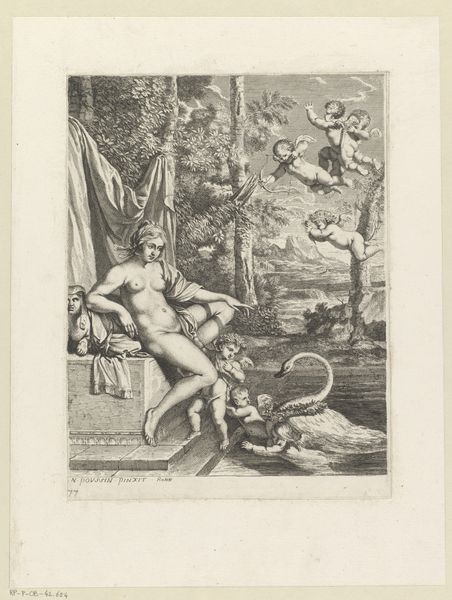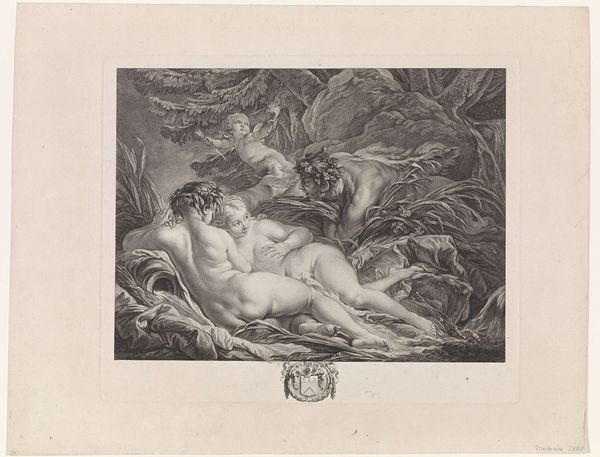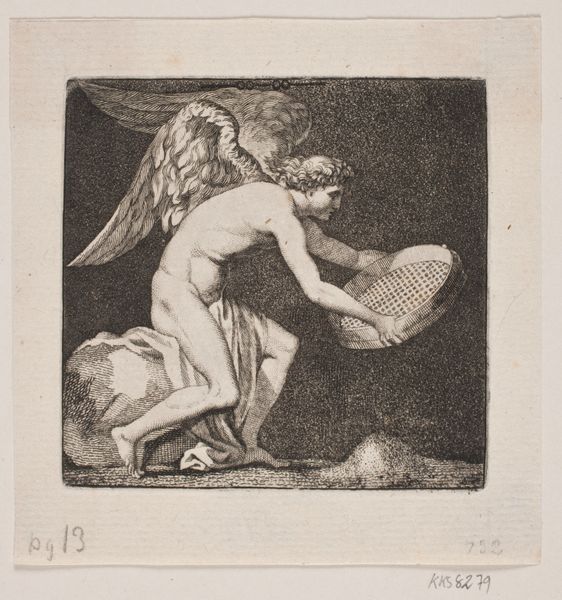
print, engraving
#
baroque
# print
#
old engraving style
#
figuration
#
line
#
history-painting
#
engraving
#
erotic-art
Dimensions: height 74 mm, width 80 mm
Copyright: Rijks Museum: Open Domain
Curator: Immediately, I’m struck by the tension. There's a sense of drama and almost violence, all captured in such fine, precise lines. Editor: This is an engraving by Romeyn de Hooghe, created in 1697, titled "Illustration for Boccaccio's Decameron." De Hooghe was a prolific printmaker, and here he uses that mastery to illustrate a story from Boccaccio's famous collection. Curator: The composition is fascinating. The way the figures are intertwined, almost struggling. What is this erotic depiction suggesting about power dynamics, or love versus lust within the context of its historical period? Editor: Given the Decameron’s nature, this likely depicts one of the more… colorful tales. It certainly seems charged with conflicting emotions. We have themes very pertinent to art during that time: temptation, hidden desires, and certainly a commentary on social decorum through the lens of visual language and drama. The figures could represent humanity's struggle with desire, depicted with the visual symbols Baroque loved. Curator: Do you think the starkness of the line work serves to amplify the unsettling mood? There's almost a clinical detachment in the way the scene is rendered. It makes you think about the viewer's role in this transaction. What does it mean to gaze upon such a private, turbulent moment? The engraving, made of clear and decisive lines, almost becomes a reflection of what society expected or wished to expose about hidden truths, under controlled settings. Editor: Exactly! And considering the source material, the Decameron being a collection of sometimes salacious stories told during a time of plague, the imagery taps into both the escapism and the anxieties of the period. Think about those windows—suggesting possible onlookers or constraints—do you think this speaks to broader fears and concerns of the late 17th century? Is this meant as titillation, or something else entirely? Curator: I agree—a real tension between private actions and public surveillance permeates this. It’s precisely in such ambiguities that this small engraving really invites bigger discussions about its cultural moment. Editor: Indeed, It's a deceptively simple print that offers so many layers. And I must say, I think I appreciate de Hooghe even more now for provoking these questions.
Comments
No comments
Be the first to comment and join the conversation on the ultimate creative platform.
